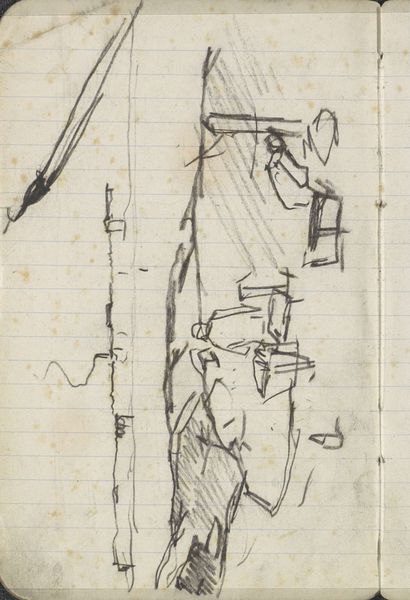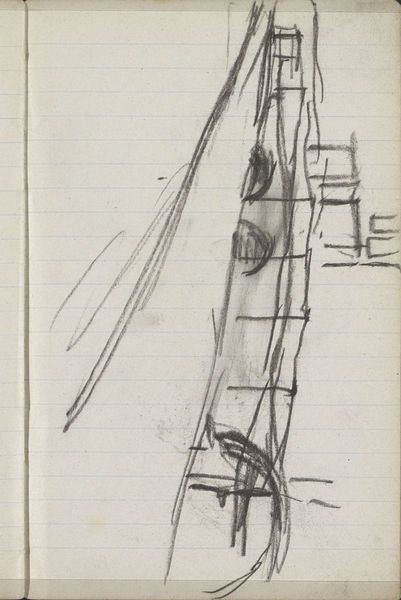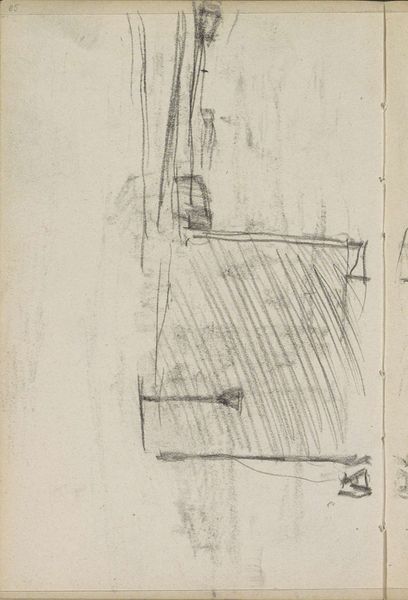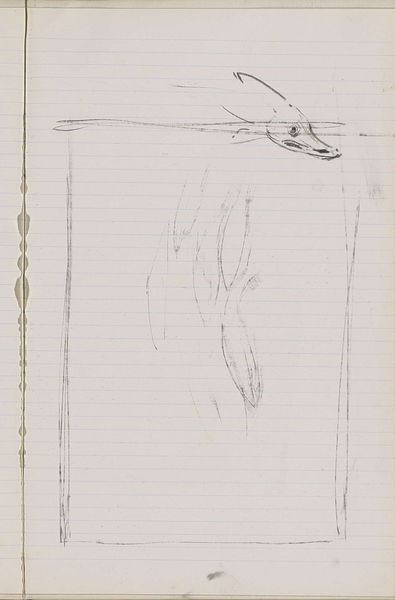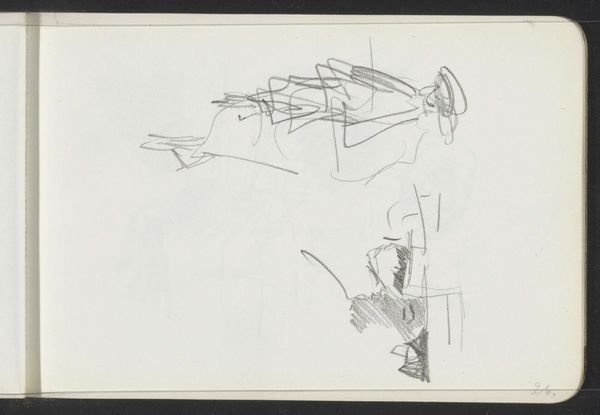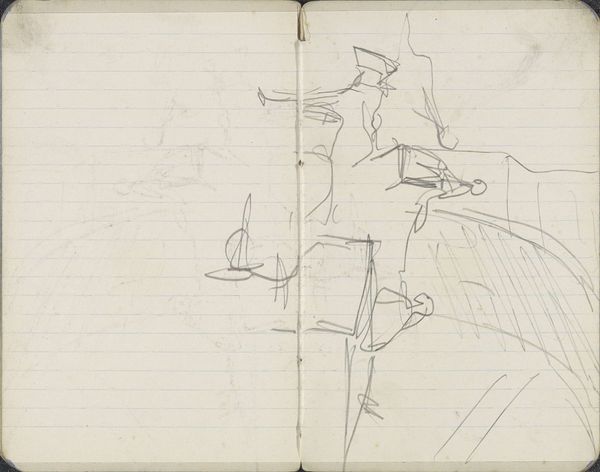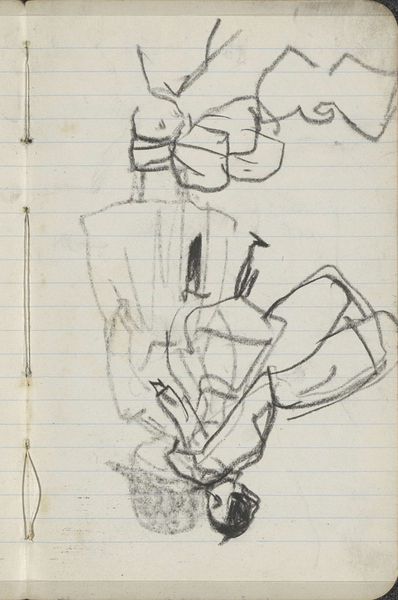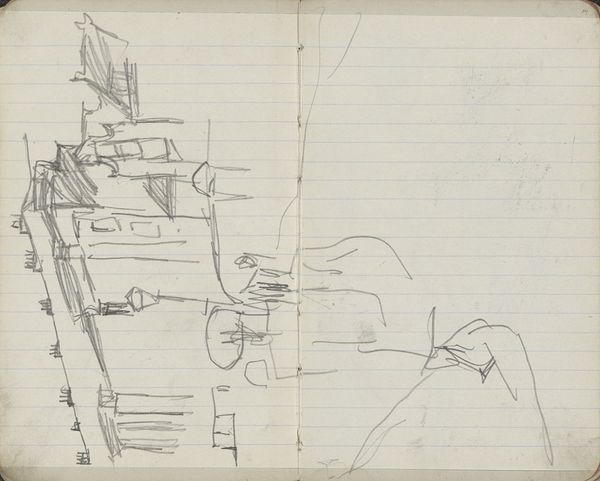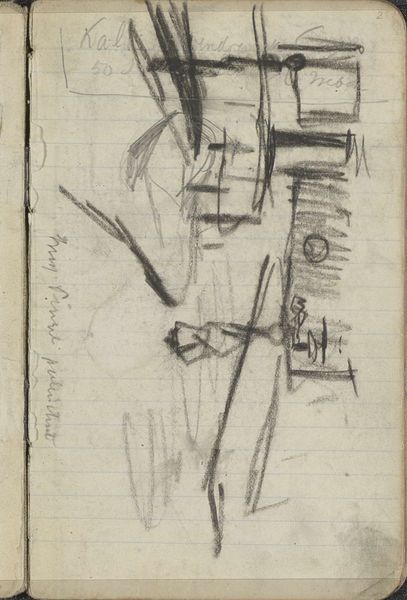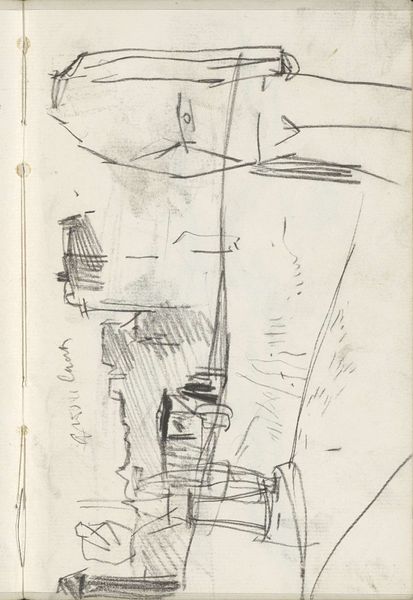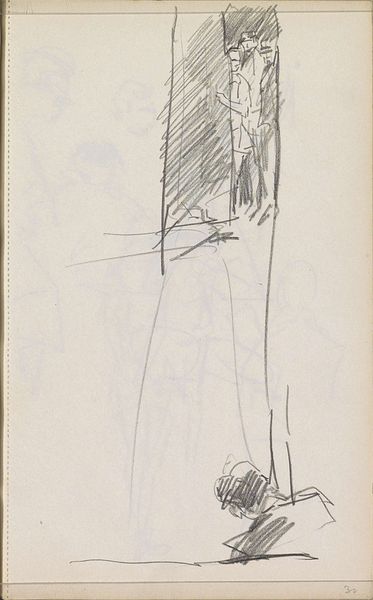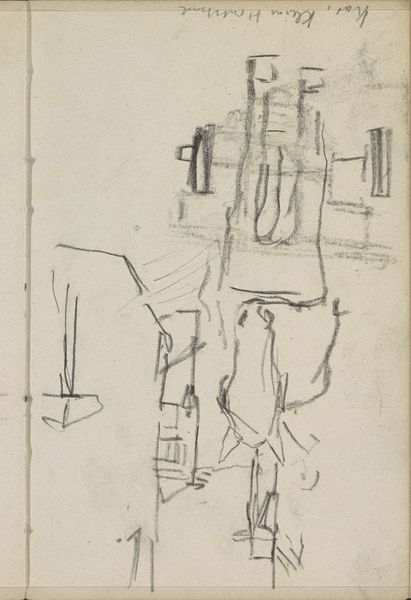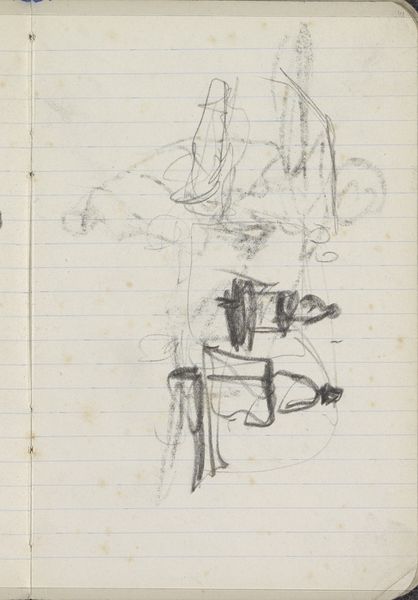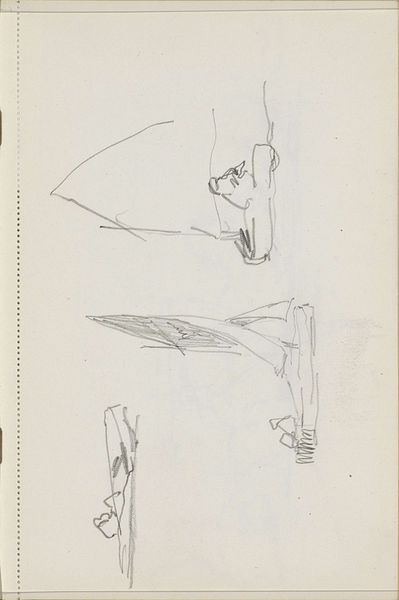
Copyright: Rijks Museum: Open Domain
Editor: This drawing, "Figuren, mogelijk op straat," from 1896-1897 by George Hendrik Breitner, is a quick pencil sketch on paper currently held in the Rijksmuseum. The figures feel fleeting, like a snapshot of daily life. How would you interpret the significance of such a seemingly casual work? Curator: Well, consider the context. Breitner was deeply engaged with capturing the dynamism of Amsterdam. These rapid sketches weren't just casual; they were a vital part of his process. He was distilling observations into their purest form. What do you notice about the way the figures are rendered, even in their simplicity? Editor: There's a real sense of movement despite the minimal lines, and I suppose that is something hard to render and suggest at the same time. The lack of detail almost adds to the sense that they’re hurrying by, becoming anonymous figures in a modernizing city. Curator: Precisely. The sketch isn't trying to give us individual portraits. Instead, it taps into the feeling of urban life, the anonymous crowd. Breitner’s use of implied form is also significant; it evokes a kind of cultural memory of fleeting encounters, something increasingly common at the time, do you agree? Editor: Yes, that makes a lot of sense. Seeing it as a study of a modern phenomenon, rather than just a quick sketch, changes everything. Thank you for helping see that! Curator: It shows the weight images can carry across time. They can seem simple on the surface, but connect to something much bigger and perhaps speak of anxieties as societies transitioned. It’s the symbolic shorthand of lived experience. Editor: It's amazing to think that a few lines can speak volumes about a time, place, and feeling. Curator: Indeed, art acts as an icon of what it once meant to be human.
Comments
No comments
Be the first to comment and join the conversation on the ultimate creative platform.
